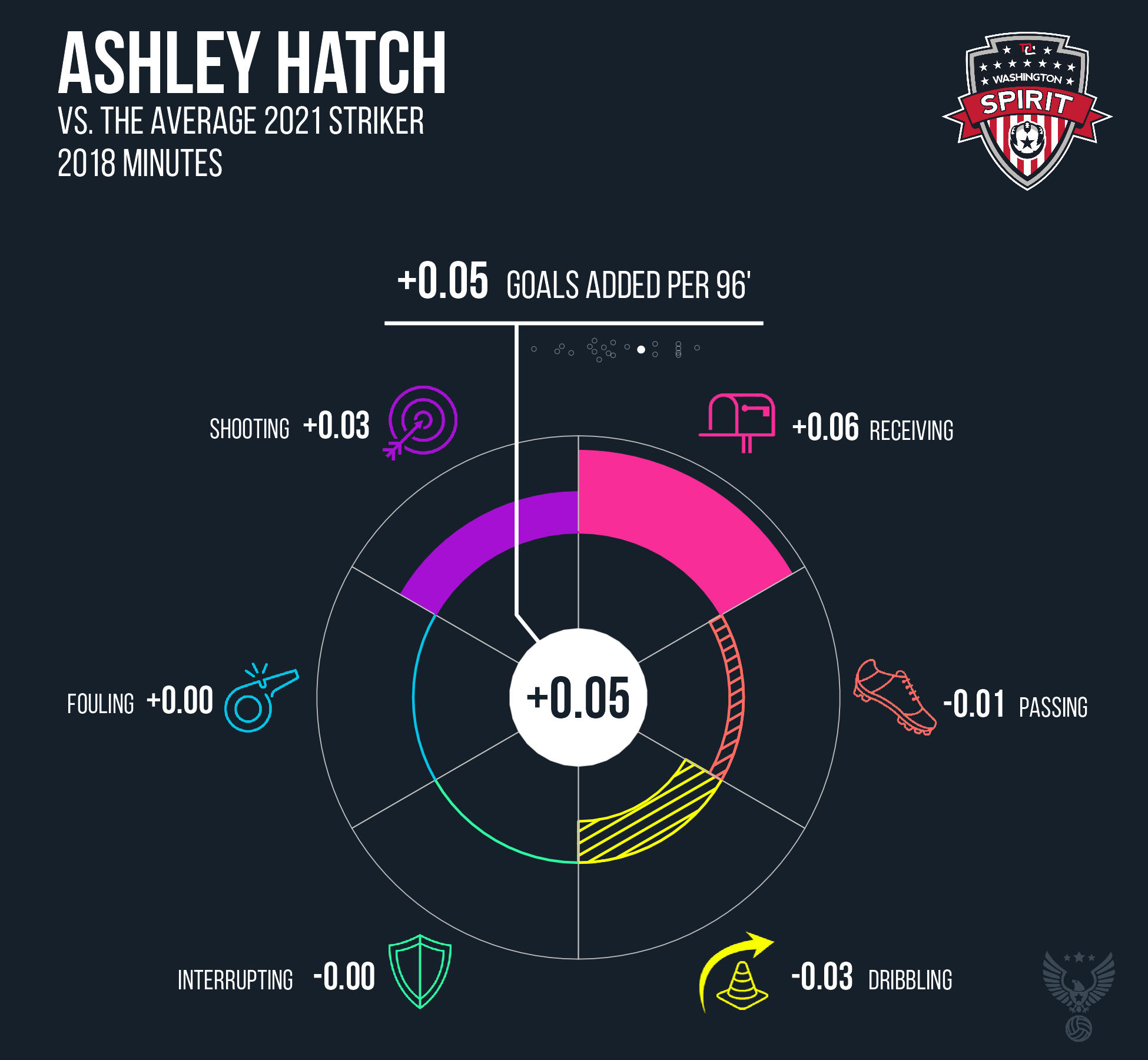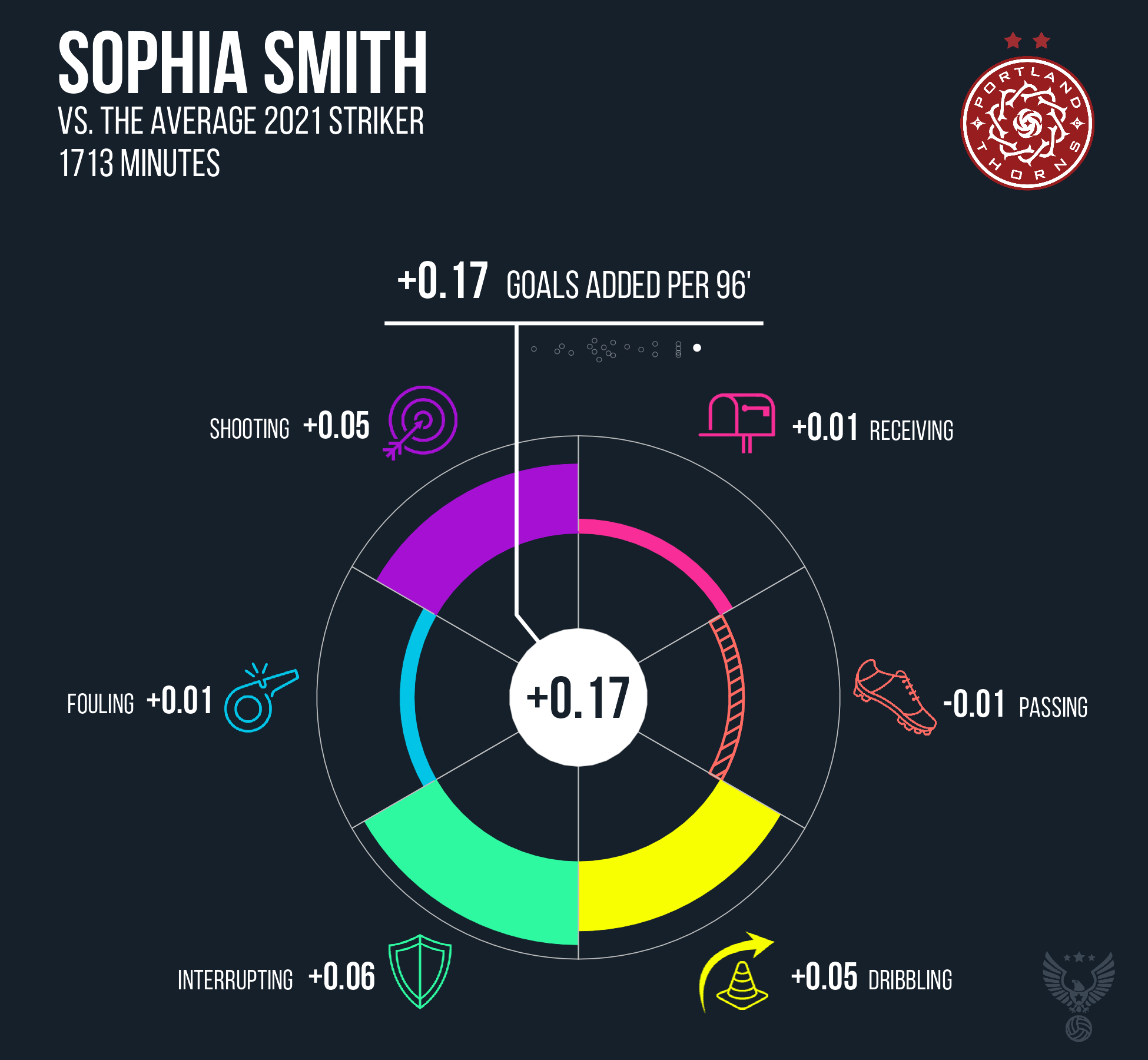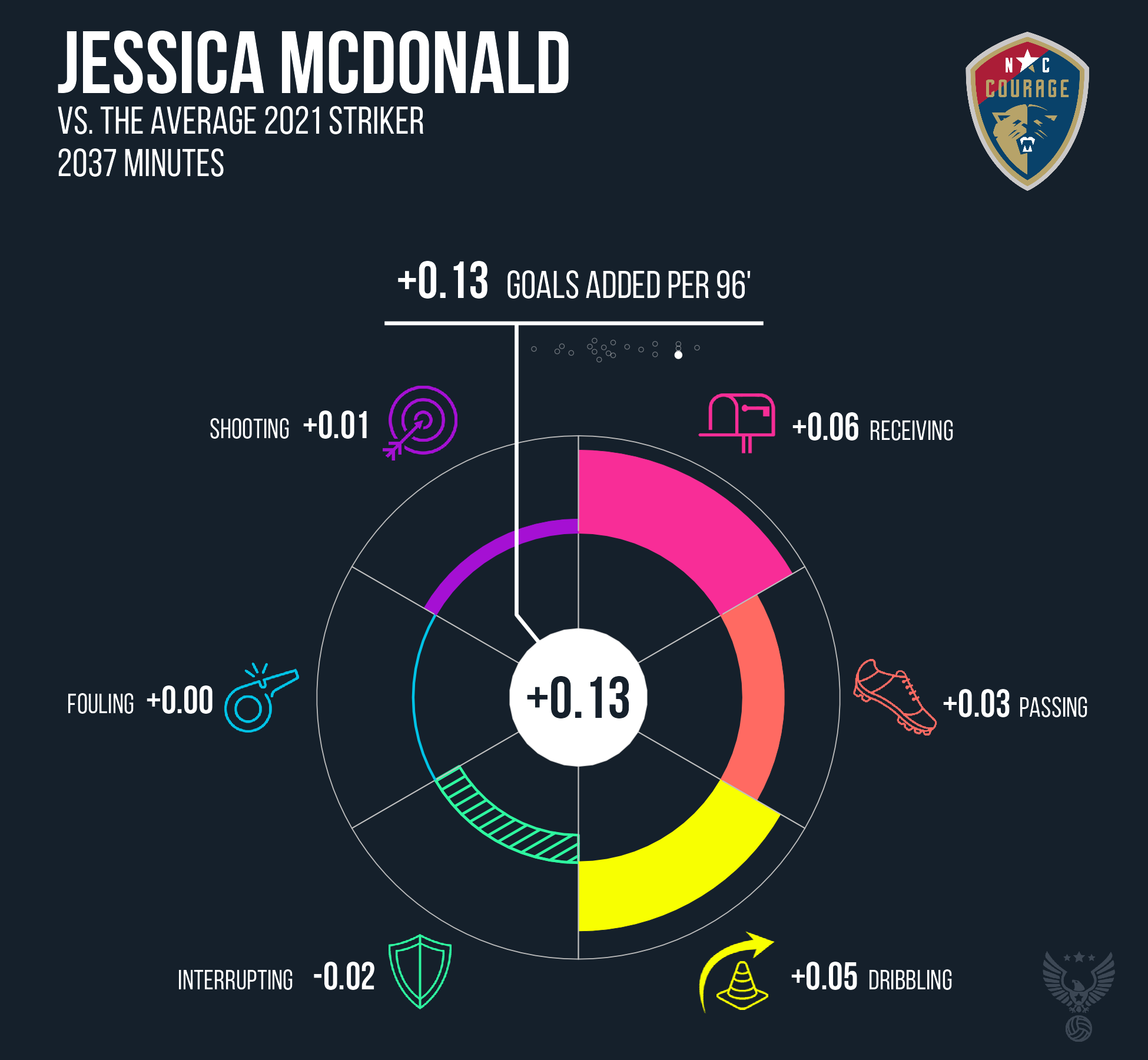The Four Biggest Tactical Trends in the NWSL
/Special thanks to Arielle Dror, Kieran Doyle, and my friends at Zweitracht FC for their help, as ever, with parsing out my thoughts on the women’s game.
Amidst all the chaos that the 2021 NWSL season brought (which we won’t get into in this space) there was some fantastic soccer played. While the goals per 90 were at their lowest in many years, that did not mean the matches were without intrigue: the manufactured parity that is commonplace within the American sports ecosystem has thankfully not led to teams essentially being copycats of one another. Still, like almost any league, there exists a clear and definitive “style” which conditions what we see week in and week out.
This being noted, what were the defining trends which shaped the campaign? What tactical outputs from clubs and their key players established how the league was played on the field and had tangible impacts on how teams won and lost matches. Some of these are focused on how the actual league itself shapes the way the game is played, and others are more about the various quirks that individual teams and players have brought to the field. This list is not exhaustive, but the four profiled below are some of the most interesting and recognizable traits to the NWSL from 2021, and the ones most likely to play a part in 2022.
1) The importance of super attacking full backs across the league
In terms of the collective tactics across the league, the NWSL has followed a trend that has developed across soccer worldwide in recent years, regardless of level - the importance of super attacking and aggressive full backs. The United States national team has done this for years, thanks to a combination of factors such as team strength (more of the ball = increased need for ball progression) and a relative dearth of defensively minded individuals in the country. At a league wide level, this has followed suit.
On a tactical level, in prior seasons full backs were so often an afterthought in regards to in possession structures which forced them to defend first and provide a basic outlet. The NWSL has slightly lagged behind this development: when looking at the Team Of The Year from just a few seasons back (while obviously not the greatest barometer), the presence of fairly simplistic “stay at home” wide defenders is prevalent. Flip forward to 2021, and these players are vital cogs for their offensive organization. What do they do, at a basic level to provide this?
For one, their general starting position up the field is much higher than on average previously. When teams are building up play, alongside splitting their central defenders wide, the full backs act as auxiliary wingers, inverting inside and occupying the half spaces (essentially the spaces between the middle of the field and the touchline). This aggressive starting position quite simply gets them on the ball in better positions on the field to create chances. Some examples of players which fit this category are the likes of Sofia Huerta, Caprice Dydasco, and Carson Pickett. Another mainstay in this category for a number of seasons has been Meghan Klingenberg in Portland. Speaking about his full back former Thorns coach Mark Parsons praised the veteran's ability to: “build, play-make, create pressure...[thanks to her] we’ve been a team that’s been able to break teams down no matter what spaces are or are not available.” This quote is a common denominator across the league’s players in this division. They are now a +1 in the final third: comfortable on the ball, capable of playing the final pass, and performing the same roles as traditional wingers.
These changes in emphasis are manifested in the numbers below. In pretty much every discernable category, the full back is more involved in 2021 compared to 2018.
As the start of the 2022 season gets closer, expect this growth in the position to continue to flourish, and for the league’s best teams to utilize their players in this manner. I am intrigued to see if a few trends we’ve seen from the men’s game in recent season manifest themselves in the NWSL, namely the attacking full back as a team’s chief chance creator outside of crosses, and the use of full backs as auxiliary midfielders in the final third. While this might not necessarily be something that this upcoming season brings us, the growth in attacking full backs in general lends itself to this development long term.
2) How many teams have an attacker whose only job is to essentially press and defend
One of the most interesting aspects that requires a deep dive into the data to locate is the the birth of pressing forwards, players whose numbers (and in turn output in terms of scoring, creating, etc.) don’t necessarily *pop* outside of the stuff they do without the ball. High pressing systems in general have gained popularity worldwide, but it’s very rare that a team’s attacker is more focused on what they are doing without the ball as opposed to the penalty area in the final third. In the NWSL there are a number of players who fulfill this duty, both in the form of strikers and center forwards as well as wide players. Two of the best examples are Rachel Hill in Chicago and Veronica Latsko who recently moved to OL Reign.
Veronica Latsko exemplifies the pressing #9 perfectly. In most defensive systems, the forward is the one who leads and shapes the press - they essentially “trigger” these moments by forcing the ball carrier to where they want to trap them, and by simply initiating the pressure that teammates have to follow. Latsko is no different. When she plays on her own she is adept at splitting the opposition’s build-up and halving the field. Unlike a lot of other forwards who see pressing as an annoyance rather than one of their key responsibilities, Latsko is great at continuing her pressure from behind, commonly known as “reverse pressure.” This led to 3.29 pressure regains per 90 in 2021, and should shoot up with more minutes in 2022. Even when there is not a defined pressing phase that her team is in, she is a phenomenal counterpresser. She immediately hunts the ball if she miscontrols it, forcing errant passes and similar opportunities. She’s simply a menace to play against.
Rachell Hill for Chicago is a winger, so her pressure manifests itself in a lot of different ways. She is the “second phase” of the defensive organization that Latsko helps set up. When the ball is put into wide areas the Red Stars player is relentless with her aggressiveness: racking up a load of ball recoveries, interceptions, etc. and using the touchline and the lack of space opponents have to her benefit. These kinds of actions from Hill and other wingers in the league which match this profile make them a “creator” of attacking organization even if they aren’t doing so in their team's on-ball phases. They press to create transitions and to use the opponent's own attacks against them. In 2022, I see this as another consistent tactic and idiosyncrasy of NWSL’s soccer, and one which fits nicely alongside the third section of this piece.
3) The relative lack of “true” number nines. Forwards being tactically flexible.
Another thing that has presented itself in the attacking players is the relative lack of a true #9 in the league. There just aren’t many typical penalty area poachers playing with their back to goal whose only job is to score goals and be a focal point in the final third. That is not to say this role is completely dead: after all, the league’s top scorer was Ashley Hatch, who very much plays like a target forward. That being said, the majority of star attackers and strikers are essentially “hybrid” roles capable of playing anywhere across the front line. Why is this the case?



One of the macro reasons for this is the formations that many NWSL teams played, and how they affect the responsibilities of players within. While there are some outliers, the most commonly used formation in 2021 was a 4-3-3. Not to get too deep in the weeds, but compared to more rigid tactical formations which look similar on paper, a 4-3-3 allows more flexibility in the roles and creates more possibilities to have wingers acting as inverted or inside forwards or center forwards dropping deeper providing links to the midfield. Because of this, many of the league’s stand out “strikers” last season didn’t necessarily match the stereotypes commonly held about goal scorers.
If Ashley Hatch is the “prototype” striker in the league we can use her as a basis for how the others compare. Using Goals Added (g+) as our template, outside of shooting and receiving Hatch does very little of note. However, the other forwards in the league which rate highly for xG and other chance creation metrics do show other aspects to their game which make them dual threats. Sophia Smith is a talented dribbler and interrupts play at an exceptional rate (another player who qualifies for the previous trend categorized), Jessica McDonald is a huge benefit for her passing range, and Rachel Daly displays an innate ability to move and work off the ball to create danger. These are just a few examples of the types of forwards we saw shine in 2021, and this trend will definitely continue in 2022.
4) The league-wide style of play being centered on transitional, direct, soccer
If you had to put forth an “American soccer” style of play, throughout the entire history of the national teams (both the USWNT & USMNT) and since the creation of MLS and the many iterations of women’s professional soccer, what would it be? There are no prizes for correctly stating this: American soccer is physicality robust, energetic, direct, and fast. It always has been and, for a myriad of reasons, should always have some elements of this. A domestic league’s brand of the game doesn’t always match that of the national team: the Premier League in England, for example, has shapeshifted a lot over its lifespan. However in the United States (and for the sake of this article in particular), the NWSL is extremely fast paced and chaotic when compared to other women’s leagues.
As you can see from the above, the NWSL is a division which is extremely based around the generation of fast attacking moves: Tons of changes of possession, shots generated with the field stretched, and verticality. As mentioned previously, most of the top sides in the league play some kind of 4-3-3 or 4-2-3-1. Within these systems, (largely the latter), the double pivot in midfield gives teams a solid platform to utilize when breaking forward quickly and throwing numbers forward in attack.
In the 2021 NWSL season, there was a relative homogeneity to these tactics across the league, but the teams which separated themselves from the pack were those who were able to monopolize the ball with possession, and turn matches into less of a pinball game. Three of the four teams (other than the Red Stars) which made the NWSL Finals were the sides which ranked the slowest for ball progression, were very indirect, and had higher possession figures across the board. Essentially, they figured out how to take the chaos that was inherent in games and take away threats others imposed in transition. What they were doing was essentially defending with the ball: pinning teams deeper and limiting changes of possession that add randomness into individual and collective battles. A good proxy for displaying this in data outside of the aforementioned “speed of play” metrics is by looking at the number of possessions + possession share percentage. There is more of the ball and providing opponents fewer opportunities to turn matches into scraps. While not a stunningly obvious correlation, teams such as the Spirit, Courage, and Gotham were sides which tilted the field in their favor.
While there has been a coaching carousel in the league and the addition of two new teams to the fore, it seems unlikely that much will change in this regard. After all, NWSL has always been grueling and filled with tons of athletic dominant and imposing players. The question is now whether (like in 2021) the teams that effectively take the air out of matches will be those which rise to the top, or if it was just a byproduct or quirk of the 2021 campaign in general.
Conclusion
As we edge closer to the start of the new season there is tons to be excited about: How will the likes of San Diego Wave and Angel City FC settle into the NWSL? How will new coaches, trades, and player acquisitions affect the playoff chase? The potential storylines are endless. Outside of these more marco-narratives that drive interest, the actual on-field plots which shape these aforementioned are a story themselves. Whether it be the collective, overarching, style of play that teams employ or the individual roles that players use within them, next season in NWSL should see tons of carryover from the four sections highlighted in this article. I am excited to not only see these trends continue going forward, but how they morph and grow into more complex and interesting nuances as we head down the season’s stretch. As we get close to rolling out our team by team previews on American Soccer Analysis, keep these things in mind!

